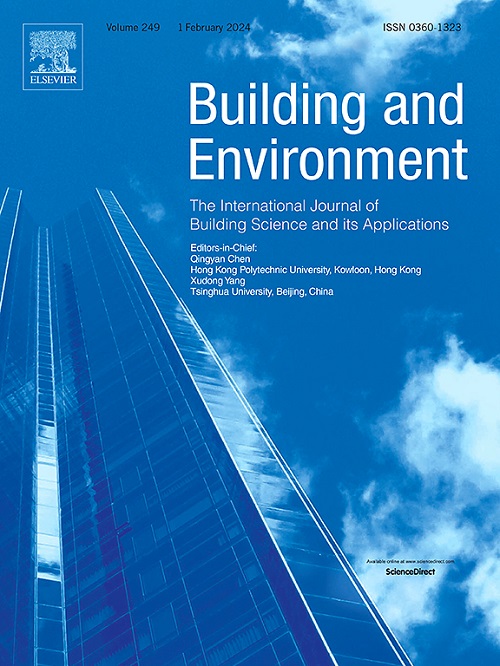基于可穿戴生物传感器生理数据的可解释通用热舒适模型:光梯度增强机(LightGBM)和SHAPLEY Additive exPlanations(SHAP)
IF 7.1
1区 工程技术
Q1 CONSTRUCTION & BUILDING TECHNOLOGY
引用次数: 0
摘要
本研究旨在利用从腕带式可穿戴生物传感器获得的生理信号,开发一种通用的热舒适模型。因此,我们利用从生理信号(包括皮电活动(EDA)、光敏血流图(PPG)和皮肤温度(SKT))中提取的各种特征,构建并评估了有监督的机器学习模型。该模型的性能使用了从 18 个受试者身上收集到的数据进行评估,这些数据来自受控实验环境。此外,这项研究还采用了 "排除一个受试者交叉验证"(LOSOCV)而非传统的 "k-fold CV "来评估模型对新受试者的普适性。此外,还加入了 SHapley Addictive exPlanation (SHAP),以增强模型的可解释性和透明度。LightGBM 模型在区分热偏好(即 "想要更暖和"、"更舒适 "和 "更凉爽")方面的测试准确率高达 79.7%,令人称赞。这些发现强调了采用可穿戴生物传感器评估真实环境中居住者热舒适度的可行性。这项研究为广泛应用连续、客观、无创的建筑居住者热舒适度监测方法奠定了基础,是对文献的重大贡献。考虑到以往个性化热舒适度模型因个体差异而面临的挑战,我们的研究为开发通用热舒适度模型迈出了关键一步。本文章由计算机程序翻译,如有差异,请以英文原文为准。
Interpretable general thermal comfort model based on physiological data from wearable bio sensors: Light Gradient Boosting Machine (LightGBM) and SHapley Additive exPlanations (SHAP)
This study aims to develop a general thermal comfort model using physiological signals obtained from wristband-type wearable biosensors. Accordingly, we constructed and evaluated supervised machine learning models by leveraging a diverse array of features extracted from physiological signals, including electrodermal activity (EDA), photoplethysmogram (PPG), and skin temperature (SKT). The model’s performance was evaluated using data collected from 18 subjects across controlled experimental settings. Further, this study employed leave one subject out cross validation (LOSOCV) instead of the traditional k-fold CV to assess the model’s generalizability to new subjects. Furthermore, SHapley Addictive exPlanation (SHAP) was incorporated to augment the interpretability and transparency of the model. The LightGBM model demonstrated a commendable test accuracy of 79.7% in distinguishing thermal preferences, namely, “want warmer,” “comfort,” and “want cooler.” These findings underscore the feasibility of employing wearable biosensors to evaluate occupants’ thermal comfort in real-world environments. This study makes a significant contribution to the literature by laying the groundwork for a broadly applicable method of continuous, objective, and noninvasive thermal comfort monitoring among building occupants. Considering previous challenges associated with personalized thermal comfort models due to individual variability, our study represents a pivotal step toward the development of a generalized thermal comfort model.
求助全文
通过发布文献求助,成功后即可免费获取论文全文。
去求助
来源期刊

Building and Environment
工程技术-工程:环境
CiteScore
12.50
自引率
23.00%
发文量
1130
审稿时长
27 days
期刊介绍:
Building and Environment, an international journal, is dedicated to publishing original research papers, comprehensive review articles, editorials, and short communications in the fields of building science, urban physics, and human interaction with the indoor and outdoor built environment. The journal emphasizes innovative technologies and knowledge verified through measurement and analysis. It covers environmental performance across various spatial scales, from cities and communities to buildings and systems, fostering collaborative, multi-disciplinary research with broader significance.
 求助内容:
求助内容: 应助结果提醒方式:
应助结果提醒方式:


